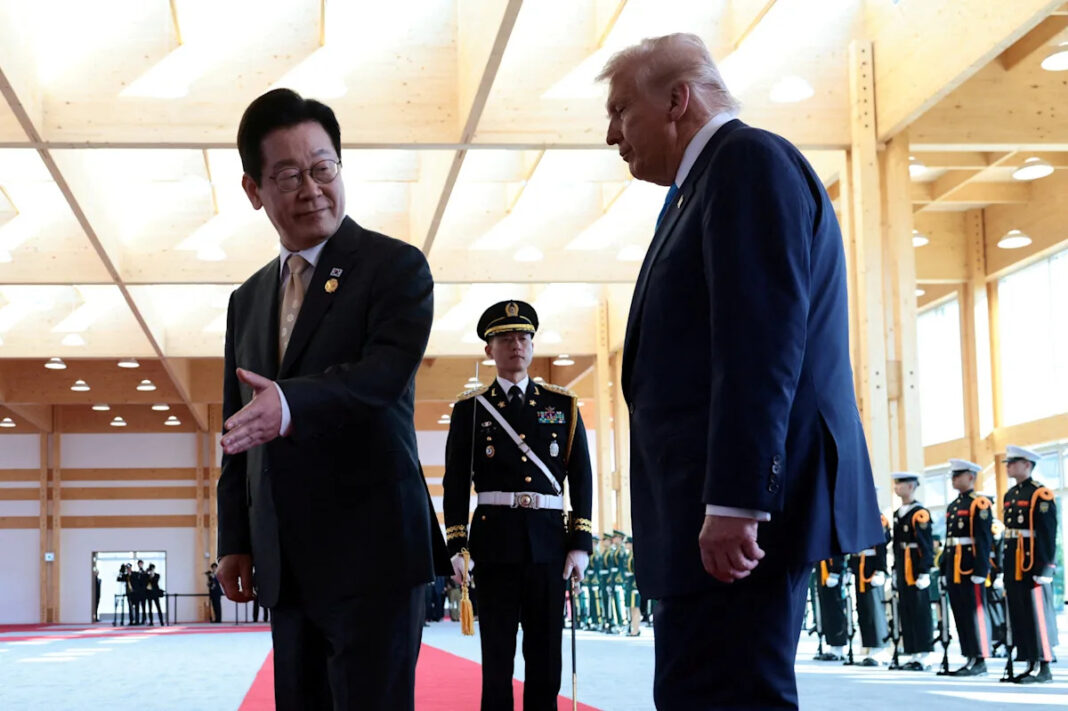The Shifting Sands of Nuclear Strategy: Insights from Trump’s Recent Announcements
When it comes to nuclear weapons strategy, stability is the goal. This foundational principle has been increasingly called into question by recent events, particularly surrounding the remarks made by former President Donald Trump during his trip to South Korea. On October 29, Trump’s back-to-back announcements regarding nuclear testing and a joint nuclear submarine program with South Korea sent shockwaves through the international community, raising alarms about potential instability in nuclear deterrence.
The Call for Nuclear Testing
One of the most startling aspects of Trump’s statements was his ambiguous order for the Pentagon to “resume nuclear weapons tests immediately.” The implications of this declaration are staggering, as it threatens to break a nearly three-decade period of nuclear restraint among major powers. Trump’s comments elicited immediate concern from nuclear weapons experts and foreign governments, who pondered what this might mean for global security.
Expert Paul Dean, a former acting assistant secretary of State, noted that the vagueness of Trump’s statement could heighten the risk of nuclear conflict. Countries around the world are now scrambling to interpret Trump’s intentions, further complicating an already tense geopolitical environment.
The Nuclear Testing Debate
Unpacking what Trump might have meant by “nuclear testing” is critical. Did he refer to actual nuclear test explosions, which would likely occur underground in Nevada, or to unarmed tests of delivery systems, like missiles? Currently, the U.S. conducts routine tests of its nuclear missiles, making the actual implications of Trump’s requests murky. Interestingly, only North Korea has conducted nuclear test explosions since 1998, with the U.S. intelligence community raising concerns about clandestine activities by Russia and China.
The ramifications of restarting nuclear tests could violate the Comprehensive Nuclear Test Ban Treaty (CTBT), which the U.S. signed but has not ratified. The CTBT was designed to curtail nuclear proliferation, and Trump’s cavalier mention of testing undermines years of diplomatic efforts aimed at controlling the nuclear landscape.
The South Korean Submarine Initiative
Further complicating the landscape are Trump’s announcements regarding a joint nuclear submarine program with South Korea. While these submarines would not be armed with nuclear weapons, discussions about their uranium fuel sources could lay the groundwork for nuclear weapons capabilities. The notion of granting South Korea domestic uranium enrichment capabilities has stirred considerable debate. Historically, U.S. diplomats have been cautious about allowing such advancements due to the risk of a nuclear weapons program.
Nuclear latency—a state where a country maintains the technical capacity to develop nuclear weapons rapidly without actually doing so—is now a topic of serious conversation, especially considering rising concerns about North Korea and regional stability. Experts like Victor Cha argue that this development could grant South Korea a latent nuclear capability, amplifying tensions in East Asia.
The Global Reaction
The reactions from Russia and China underline the gravity of Trump’s announcements. Both nations have expressed growing concern over the U.S.’s potential shift in nuclear policy. Russia’s Kremlin spokesperson Dmitry Peskov stated that Trump’s comments revealed a previously unknown scale of nuclear testing activity by other nations. Meanwhile, China’s Foreign Minister emphasized the need for the U.S. to uphold its commitment to the CTBT, warning against the grave implications of resuming nuclear tests.
Without clear communication channels, the ambiguity surrounding these developments poses a substantial risk to global security. The potential breakdown of nuclear arms control agreements, especially with the upcoming expiration of the last treaty between the U.S. and Russia, could plunge the geopolitical landscape into discord.
The Challenge of Immediate Testing
Logistically speaking, the U.S. may not be prepared to conduct a nuclear test “immediately.” The National Nuclear Security Administration, responsible for overseeing nuclear tests, has not publicly commented on operational readiness. This time lag raises questions about the credibility of any threats made concerning nuclear testing, showcasing the complex interplay between political declarations and operational capabilities.
Nuclear Submarines and the Future of South Korea
While the debates swirl around nuclear testing, the implications of Trump’s agreement to assist South Korea in building nuclear-powered submarines cannot be ignored. Such a partnership may strengthen South Korea’s defense capabilities while strategically changing the balance of power in East Asia. The idea of enriching uranium for these submarines has ignited discussions about the country’s future military strategy and its potential aspirations for a nuclear arsenal.
As public opinion in South Korea indicates growing support for developing nuclear capabilities, the U.S. faces a challenging diplomatic conundrum. Balancing alliance commitments with regional nuclear tensions will require deft maneuvering and clear messaging to prevent misunderstandings and potential escalations.
The developments stemming from Trump’s announcements are deeply intertwined with broader global security issues. The interplay of nuclear strategy, international agreements, and national aspirations makes for a convoluted narrative that underscores the fragility of peace in the nuclear age.



